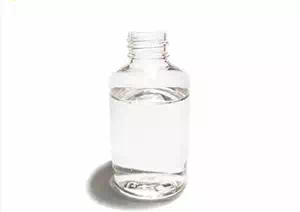All Categories


Methyl p-toluenesulfonate CAS 80-48-8, Methyl p-toluenesulfonate, CAS 80-48-8
Chemical Name: Methyl p-toluenesulfonate (Also known as: Methyl 4-toluenesulfonate, methyl p-toluenesulfonate)
CAS : 80-48-8
Formula : C8H10O3S
Mol. wt. : 186.23
EINECS : 201-283-5
| CAS | 80-48-8 |
| Molecular formula | C8H10O3S |
| Molecular weight | 186.23 |
| EIENCS | 201-283-5 |
| Form | Liquid or Low Melting Solid |
| Melting point | 25-28 °C(lit.) |
| boling point | 144-145 °C5 mm Hg(lit.) |
| Density | 1.234 g/mL at 25 °C(lit.) |
| Solubility | Chloroform (Slightly), Methanol (Slightly) |
| PKA | / |
| Color | White to yellow |
| Storage temp |
Chemical Name: Methyl p-toluenesulfonate (Also known as: Methyl 4-toluenesulfonate, methyl p-toluenesulfonate)
Molecular formula: C₈H₁₀O₃S
Molecular weight: 186.23 g/mol
CAS Number: 80-48-8
EINECS number: 201-283-5
Appearance: White crystalline solid (at room temperature) or colorless to light yellow transparent liquid (heated above the melting point)
Solubility: Insoluble in water, readily soluble in organic solvents such as ethanol, ether, and benzene
Usage suggestions
Industrial-grade preferred: 98% purity is selected for dye synthesis and polymer modification.
High-purity application: Pharmaceutical intermediates should be ≥99% HPLC grade, and heavy metal residues should be controlled (Pb≤1 ppm).
Alternative solution: In fields with high environmental protection requirements, gradually adopt low-toxicity methylating reagents (such as dimethyl carbonate).
Organic synthesis methylation reagent (Main application)
Selective methylation: It is used for methylation reactions of functional groups such as alcohols, phenols, and amines, replacing highly toxic methyl iodide.
Catalyst: Participates in esterification, acetalization and other reactions, with high purity of the product and no oxidation by-products.
Pharmaceutical and dye intermediates
Drug synthesis: Key intermediates are used in antifungal drugs (such as clotrimazole) and local anesthetics.
Dye production: It is used as a developer in the production of blueprints to enhance the clarity of development.
Modification of industrial materials
Polymer materials: Modified epoxy resin, polyurethane foam, enhanced chemical corrosion resistance.
Imaging tape industry: Special coating components enhance adhesion stability.
Health risk:
Strong irritation: Contact with skin/eyes can cause chemical burns and dermatitis. Respiratory tract inflammation caused by inhalation of high-concentration vapor (R36/37/38).
Toxicity data: Oral LD₅₀ in rats =341 mg/kg, subcutaneous LD₅₀=250 mg/kg.
Protection and storage
Operation protection: Gas masks, acid and alkali resistant gloves and goggles are required.
Storage conditions: Cool and well-ventilated (≤25℃), avoid mixed storage with oxidants.
Environmental protection compliance
Exports to the European Union require REACH certification, and for pharmaceutical grades, they must comply with FDA standards.
* Prompt reply and 24 hours online, professional team to provide best price and high quality product.
* Sample testing support.
* Every batch of products will be tested to ensureits quality.
*The packing also can be according the customers` requirment.
*Any inquiries will be replied within 24 hours.
*we provide Commerical Invoice, Packing List, Bill of loading, COA , Health certificate and Origin certificate. If your markets have any special requirements, let us know.